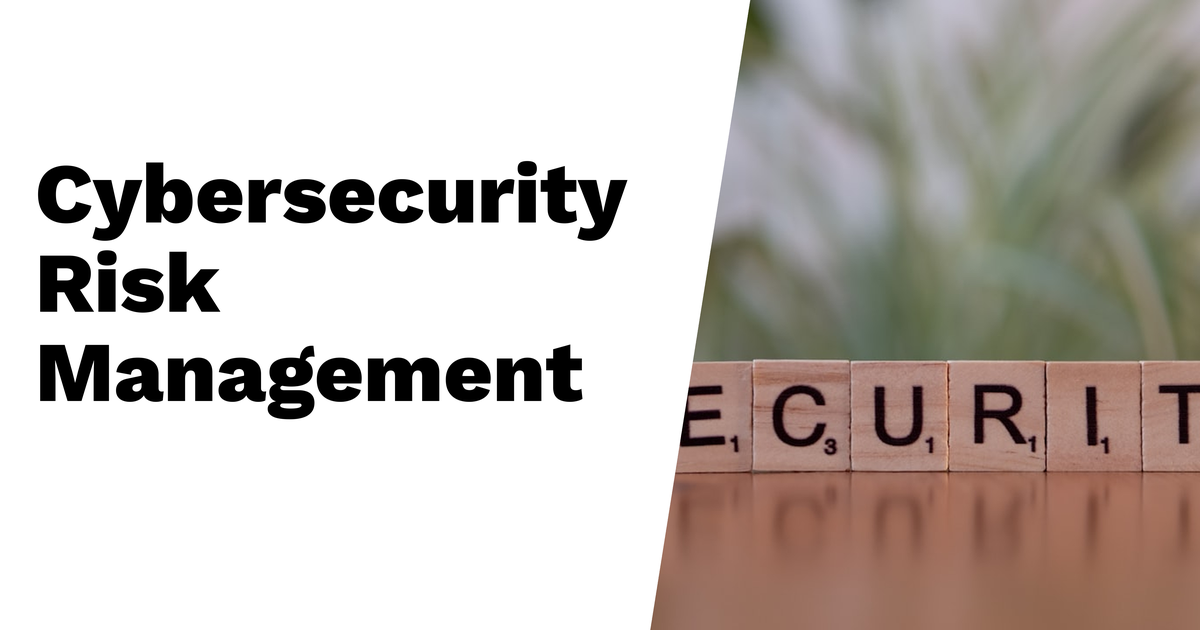Cybersecurity risk management is essential for safeguarding an organization’s IT infrastructure and sensitive data. To effectively manage risks, companies should begin by identifying potential threats, such as malware and human error. After recognizing these risks, they can analyze their likelihood and impact using tools like risk assessment matrices. It’s important to build a culture of awareness around cybersecurity, implement established frameworks, and regularly assess digital assets for vulnerabilities. Distributing responsibilities among employees ensures everyone plays a role in prevention efforts. Additionally, creating clear incident response plans and maintaining open communication about threats can significantly enhance organizational resilience against cyber attacks while ensuring compliance with new regulations.
Table of Contents
- Understanding Cybersecurity Risk Management
- Key Steps in Cybersecurity Risk Management Process
- Best Practices for Cybersecurity Risk Management
- Regulatory and Compliance Considerations
- Technological Solutions for Risk Management
- Challenges in Cybersecurity Risk Management
- Frequently Asked Questions
1. Understanding Cybersecurity Risk Management

cybersecurity risk management is vital for any organization looking to protect its sensitive data and IT infrastructure. This systematic approach involves identifying vulnerabilities, assessing potential threats, and implementing controls to mitigate risks. Organizations must be aware of both internal and external threats, including insider threats and various cyberattacks.
The process is not a one-time effort, but rather an ongoing cycle of continuous monitoring and reassessment of risks. This evolution is necessary to adapt to new challenges that arise in the digital landscape. Effective risk management integrates people, processes, and technology to safeguard information assets. Collaboration across departments is crucial, ensuring a unified approach to security that aligns with overall business strategy. Engaging stakeholders helps to understand risk perceptions and priorities within the organization.
Additionally, documenting risks and management strategies is essential for accountability and future reference. This comprehensive understanding of cybersecurity risk management lays the foundation for a proactive security posture.
2. Key Steps in Cybersecurity Risk Management Process
Identifying risks is the first step in effective cybersecurity risk management. This involves a detailed assessment of your systems to locate vulnerabilities, which can include anything from software flaws to human error. Once risks are identified, the next step is to analyze them. This can be done using qualitative and quantitative methods that assess both the likelihood of a risk occurring and its potential impact on the organization. This helps prioritize which risks need immediate attention.
After analyzing, it’s time to manage these risks. Develop customized strategies for each risk, focusing first on those that pose the greatest threat. For example, if a specific vulnerability has a high probability of being exploited, a detailed action plan should be established to mitigate that risk. Monitoring risks is equally important. Set up a routine to regularly assess risks and adjust your strategies as new threats emerge or as your business environment changes.
Communication is key throughout this process. Share your findings with stakeholders to ensure everyone understands the potential risks and the steps being taken to address them. Additionally, regularly reviewing your policies is essential. As new risks and regulatory requirements arise, your security policies should evolve to reflect these changes.
It’s also vital to involve employees at every level. Make sure all staff members understand their roles in managing risks and the importance of following established procedures. Technology can play a significant role in this process, too. Invest in risk management tools and software that can automate certain tasks, enhancing efficiency and reducing human error. Finally, document all processes and maintain clear records of assessments and actions taken, which fosters transparency and accountability. In the end, evaluating the outcomes of your risk management strategies is crucial. Regularly assess their effectiveness and be prepared to adjust your approach as necessary.
3. Best Practices for Cybersecurity Risk Management
Building a risk management culture is essential. Everyone in the organization should understand their role in protecting sensitive data. This culture can be nurtured through regular communication and training, enabling employees to recognize threats and respond appropriately. Implementing a risk management framework, like the NIST Cybersecurity Framework or ISO 27001, helps align security practices with industry standards and specific organizational needs. Regular risk assessments are necessary to keep pace with evolving threats; scheduling periodic reviews allows organizations to identify new vulnerabilities and assess the effectiveness of existing controls.
Distributing responsibilities among team members fosters accountability, ensuring that cybersecurity is not just the job of the IT department. Each employee should know what is expected of them in maintaining security. Prioritizing cybersecurity risks through scoring systems helps organizations allocate resources effectively, focusing on the most critical vulnerabilities first.
Having a well-defined incident response plan is crucial. This plan should detail step-by-step procedures for responding to security incidents, clarifying roles and responsibilities to minimize confusion during a crisis. Training and awareness programs play a vital role in keeping employees informed about the latest cybersecurity threats and best practices, enabling them to act as the first line of defense.
Monitoring external threats is equally important; staying informed about emerging risks ensures that defenses remain robust. Speed of response is key when a security breach occurs. Establishing quick-response protocols can significantly reduce the damage caused by an incident. Finally, sharing information about risks and security practices across departments promotes a collaborative approach to cybersecurity, ensuring that everyone is working together to protect the organization.
- Build a Risk Management Culture: Encourage a mindset where everyone understands their role in cybersecurity.
- Implement a Risk Management Framework: Choose a framework that aligns with industry standards and your organization’s needs.
- Conduct Regular Risk Assessments: Schedule periodic reviews to identify new threats and assess existing controls.
- Distribute Responsibilities: Assign specific cybersecurity roles to various team members to foster accountability.
- Prioritize Cybersecurity Risks: Use scoring systems to rank risks based on potential impact to guide resource allocation.
- Develop an Incident Response Plan: Prepare detailed step-by-step procedures for responding to security incidents.
- Training and Awareness Programs: Regularly educate employees on cybersecurity threats and safe practices.
- Monitor External Threats: Keep abreast of the latest cyber threats and adjust defenses accordingly.
- Speed of Response: Create quick-response protocols to minimize damage during a security breach.
- Share Information: Foster open communication about risks and security practices among all departments.
4. Regulatory and Compliance Considerations
Organizations must remain vigilant in keeping up with the latest cybersecurity laws and regulations, such as the General Data Protection Regulation (GDPR) and the Health Insurance Portability and Accountability Act (HIPAA). These laws set specific standards for data protection and privacy, requiring businesses to implement processes that ensure compliance with industry-specific standards and frameworks.
Regular audits are crucial to assess compliance status and identify areas that need improvement. These audits help organizations stay proactive in addressing potential compliance gaps before they escalate into serious issues. Maintaining thorough documentation is essential, as it demonstrates compliance efforts during audits or investigations, providing a clear record of policies and practices in place.
Training employees on compliance requirements is another vital aspect. When staff members understand these regulations, they are more likely to adhere to them, reducing the risk of non-compliance. Additionally, engaging legal counsel can be invaluable in navigating complex regulatory landscapes, ensuring that the organization is aligned with evolving legal requirements.
The consequences of non-compliance can be severe, including hefty fines and significant reputational damage. Therefore, organizations should collaborate with relevant authorities to stay updated on changes in regulations, which can often shift based on new legislation or emerging threats. Developing a compliance checklist can guide ongoing efforts and help ensure that no critical elements are overlooked.
Finally, evaluating third-party vendors for compliance is vital. Organizations should ensure that these vendors meet their compliance standards, as any lapse on their part can expose the organization to risks.
5. Technological Solutions for Risk Management
Implementing effective technological solutions is essential for robust cybersecurity risk management. Start by using encryption to protect sensitive data, making it unreadable to unauthorized users. Firewalls serve as a critical first line of defense, blocking external threats from accessing your network. Multi-factor authentication adds an additional layer of security for user access, ensuring that even if passwords are compromised, unauthorized access is still prevented. Regular software updates are vital to patch vulnerabilities; outdated systems are prime targets for cybercriminals.
For real-time monitoring, deploy intrusion detection systems that alert you to suspicious activities as they happen. Security Information and Event Management (SIEM) solutions can centralize logging and analysis, providing a comprehensive view of security events. Data Loss Prevention (DLP) tools help prevent unauthorized sharing or leaks of sensitive information. Additionally, integrating endpoint protection solutions helps secure all devices connected to your network, safeguarding against potential breaches.
Investing in vulnerability scanning tools is a proactive approach to identify and address weaknesses before they are exploited. With many businesses moving to the cloud, leveraging cloud security solutions is essential to ensure that off-site data remains protected against breaches. By combining these technological measures, organizations can create a well-rounded cybersecurity posture that significantly reduces risk.
6. Challenges in Cybersecurity Risk Management
Organizations face several challenges in cybersecurity risk management that can hinder their effectiveness. One major issue is the rapid evolution of cyber threats, which makes it hard for companies to keep their defenses updated. As hackers develop more sophisticated methods, businesses often struggle to match their defensive measures. Additionally, a significant shortage of skilled cybersecurity professionals further complicates matters. With fewer experts available, organizations may find it difficult to implement and maintain robust security protocols.
Balancing security measures with operational efficiency is another challenging aspect. High security can sometimes slow down processes, creating tension between IT and other departments. Legacy systems also pose risks, as many lack modern security features, making them vulnerable to attacks. Budget constraints can further limit investment in essential tools and personnel needed to bolster defenses.
Employee negligence or lack of awareness is another critical factor that can lead to security breaches. Even with strong security measures in place, a single mistake by an employee can open the door to cyber threats. Moreover, third-party vendor relationships can introduce vulnerabilities that are often hard to monitor, complicating risk management efforts. Compliance with evolving regulations adds another layer of difficulty, as staying compliant can be complex and resource-intensive. Lastly, limited resources for training and awareness programs may leave staff unprepared for potential threats, making it essential for organizations to find ways to address these challenges.
Frequently Asked Questions
What is cybersecurity risk management planning?
Cybersecurity risk management planning is the process of identifying, assessing, and prioritizing potential security threats to information systems. It involves creating strategies to mitigate or manage those risks effectively.
Why is it important to have a cybersecurity risk management plan?
Having a cybersecurity risk management plan is crucial because it helps organizations protect sensitive data, ensures compliance with regulations, and minimizes the impact of security incidents.
What are the key steps in creating a cybersecurity risk management plan?
The key steps include identifying assets, assessing vulnerabilities, analyzing threats, evaluating risks, and developing strategies to manage or mitigate those risks.
How often should a cybersecurity risk management plan be reviewed and updated?
A cybersecurity risk management plan should be reviewed at least annually, or more frequently if there are significant changes in the organization, technology, or threat landscape.
Who should be involved in the cybersecurity risk management planning process?
The process should involve a variety of stakeholders, including IT staff, management, compliance officers, and even legal advisors, to ensure a comprehensive approach to risk management.
TL;DR This blog post covers best practices for cybersecurity risk management planning. It emphasizes the importance of understanding and managing cyber risks through key steps like identifying and analyzing risks, while promoting a culture of awareness throughout organizations. The post outlines best practices such as implementing risk management frameworks, conducting regular assessments, and developing incident response plans. Additionally, it highlights compliance considerations, technological solutions, and the challenges faced in this field. Ultimately, effective risk management strategies are crucial for safeguarding organizational systems and data from evolving cyber threats.





